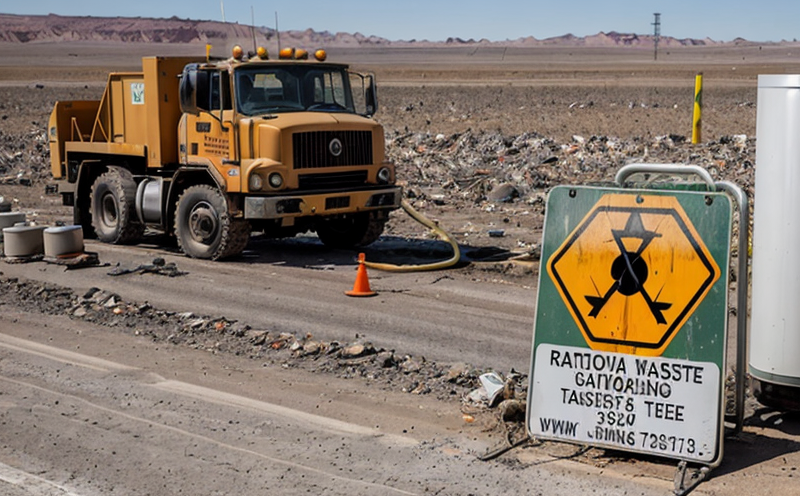ASTM C1225 Performance of Waste Immobilization Materials
The ASTM C1225 test method is a critical standard for evaluating the performance characteristics of waste immobilization materials used in radioactive and hazardous waste management. This test assesses the integrity, durability, and chemical stability of these materials under various environmental conditions. The primary purpose is to ensure that the materials can effectively encapsulate and contain radioactive or hazardous waste, preventing it from leaching into the environment.
The testing process involves subjecting specimens of waste immobilization materials to simulated environmental stressors such as high temperature, humidity, water immersion, and chemical attack. Specimens are prepared by casting a defined amount of material into standard-sized molds, which are then allowed to cure according to specified conditions. Once the curing process is complete, the specimens undergo a series of mechanical and physical tests to evaluate their resistance to degradation.
The ASTM C1225 test method covers several key parameters that are essential for ensuring the reliability of waste immobilization materials. These include:
- Water permeability
- Thermal stability
- Mechanical strength (compressive and tensile)
- Leach resistance
- Chemical durability under specified conditions
The test results provide a comprehensive evaluation of the material's performance, which is crucial for regulatory compliance and ensuring safe waste disposal practices. Compliance with ASTM C1225 is often required by international standards such as ISO 7602, ISO 9843, and EN 12002.
Understanding the nuances of this test method is essential for quality managers, compliance officers, R&D engineers, and procurement professionals who are responsible for selecting suitable waste immobilization materials. The test's ability to simulate real-world conditions makes it an invaluable tool in the development and validation of waste management strategies.
Eurolab Advantages
- Expertise and Experience: Our team of experts has extensive experience in conducting ASTM C1225 tests, ensuring accurate and reliable results.
- State-of-the-Art Equipment: We utilize advanced testing equipment to provide precise measurements and analyses.
- Comprehensive Reporting: Our reports are detailed and include all relevant test parameters and compliance with international standards.
- Rapid Turnaround Time: We strive to deliver results quickly, enabling timely decision-making for our clients.
Why Choose This Test
The ASTM C1225 test is a cornerstone in the evaluation of waste immobilization materials due to its rigorous testing protocols and comprehensive assessment criteria. Here are some key reasons why this test is essential:
- Regulatory Compliance: Many regulatory bodies mandate compliance with ASTM standards, making this test indispensable for meeting legal requirements.
- Environmental Safety: Ensuring that waste immobilization materials are robust and stable minimizes the risk of environmental contamination.
- Long-Term Durability: The test helps in selecting materials that can withstand long-term exposure to various environmental factors.
- Data Accuracy: The standardized testing process provides consistent and reliable data, which is crucial for research and development.
Use Cases and Application Examples
The ASTM C1225 test has numerous applications in the field of waste management. Here are some specific use cases:
- Material Selection: Waste immobilization materials must meet stringent standards to ensure they can safely contain hazardous substances.
- Research and Development: The test helps in refining new materials for waste management, ensuring their effectiveness before commercial use.
- Quality Assurance: Regular testing ensures that the materials consistently meet quality standards over time.
- Regulatory Approval: Compliance with ASTM C1225 is often a prerequisite for obtaining regulatory approval for waste disposal methods.
For instance, in the nuclear industry, this test ensures that materials used in the containment of radioactive waste are robust enough to withstand extreme conditions. In the chemical sector, it guarantees that hazardous waste is securely encapsulated, reducing the risk of environmental harm.





